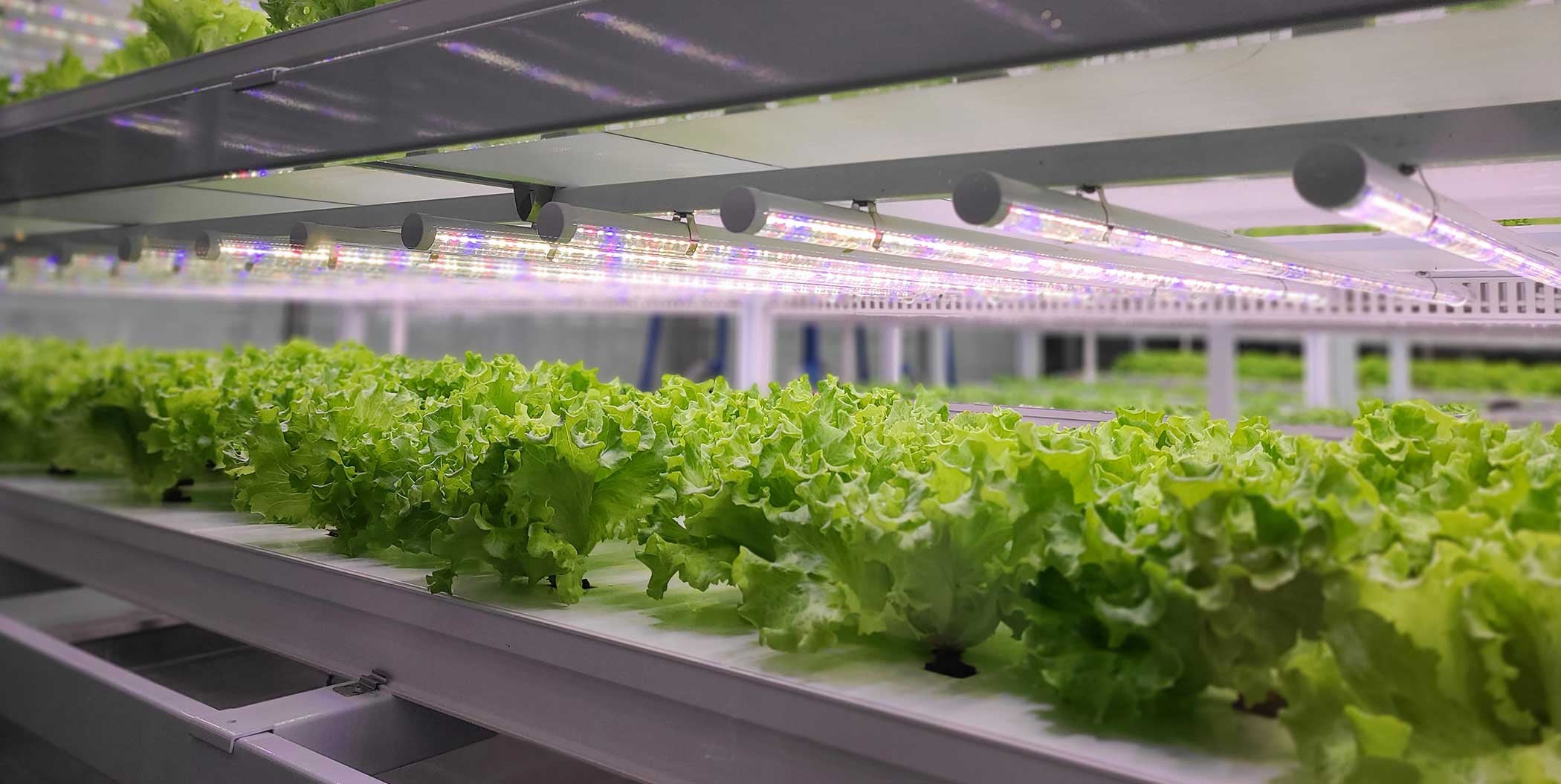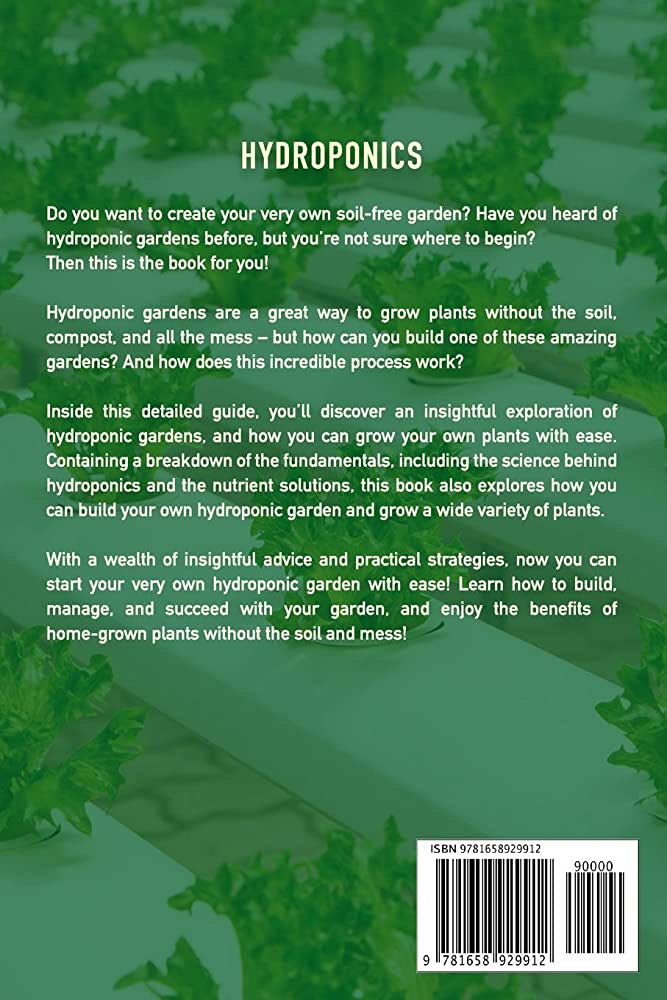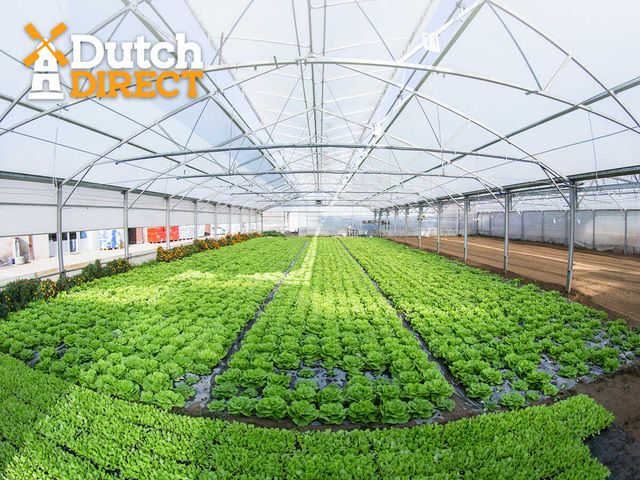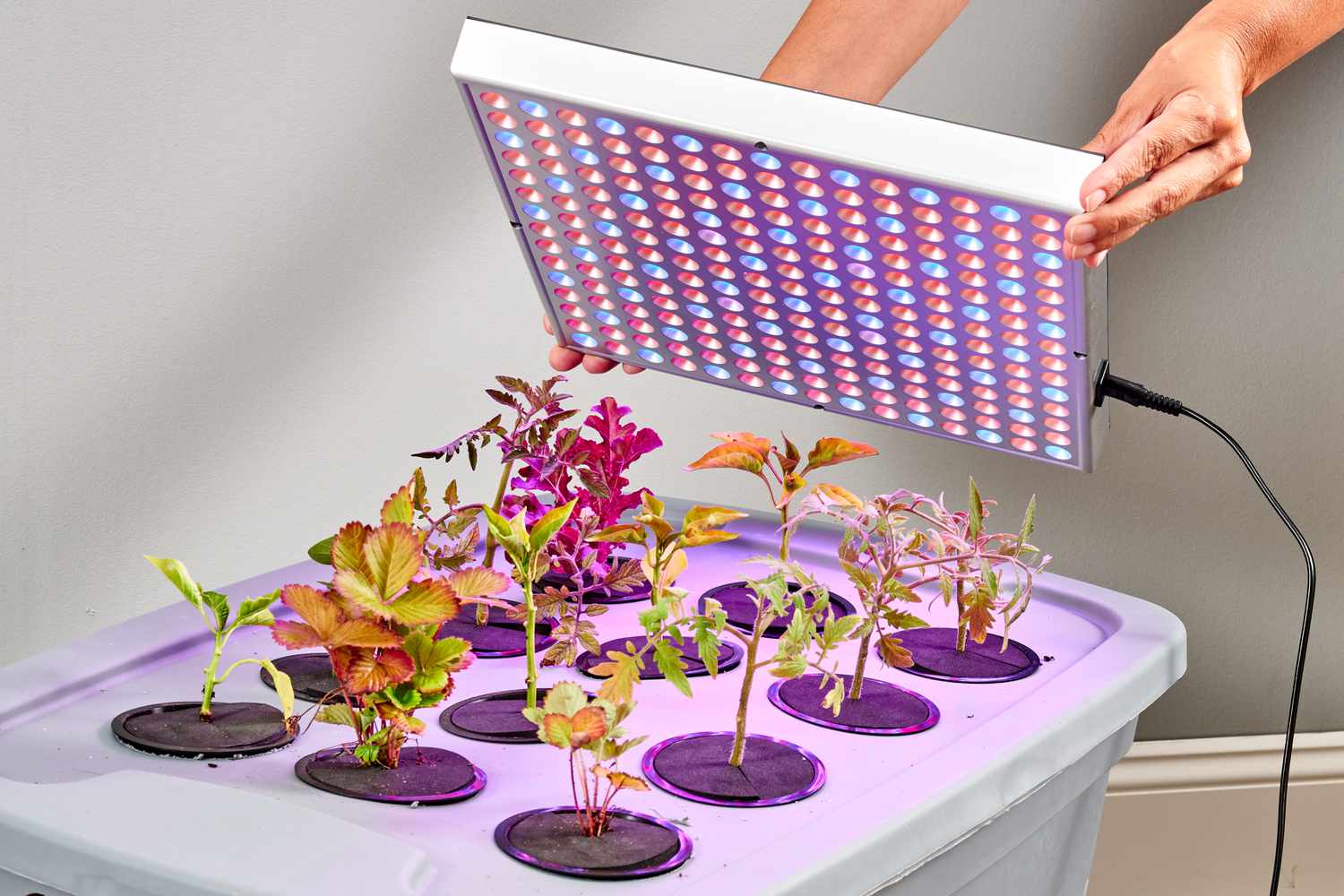Urban hydroponic farming provides an effective solution for community gardens and food banks. Urban hydroponic farming has gained popularity as a sustainable method of growing fresh and healthy crops without the need for soil or large outdoor spaces.
This innovative technique utilizes water-based nutrient solutions and vertical growing systems to facilitate high yields of nutrient-rich produce in a limited space. The benefits of urban hydroponics extend beyond just producing fresh fruits and vegetables; it also promotes community engagement and education through shared gardening experiences.
Furthermore, urban hydroponic farms provide a reliable source of fresh produce for food banks, reducing food insecurity and promoting healthier lifestyles. In this article, we will explore the advantages of urban hydroponic farming for community gardens and food banks.

Credit: www.hdrinc.com
What Is Urban Hydroponic Farming?
Urban hydroponic farming for community gardens and food banks – what is urban hydroponic farming?
Are you tired of having limited space for cultivating crops? Worry no more as urban hydroponic farming might be the solution you’re searching for. Hydroponic farming is the art of growing plants without soil, while the essential nutrients are directly supplied to the roots through a water-based solution.
Definition And Explanation Of What Hydroponic Farming Is:
Hydroponic farming is an innovative method of cultivating crops without soil. By using a water-based system enriched with necessary nutrients, the crops grow in a controlled environment. This method provides an ideal setup for multiple plants in a compact area, saving farmers space, money, and time.
Benefits Of Urban Hydroponic Farming, Such As Its Ability To Grow Crops In Small Spaces:
The benefits of urban hydroponic farming are numerous. Here are a few key points:
- Hydroponic systems can be set up in small spaces, bringing farming opportunities to urban areas where space is limited.
- Since hydroponic systems use less water than traditional soil-based farming, they are ideal for water conservation in areas prone to drought.
- Due to the controlled farming environment, hydroponics allows for advanced crop production all year round, regardless of the season or weather.
- Hydroponic farming is generally cheaper than traditional farming in terms of start-up costs, long-term maintenance, energy usage, and pest control.
How Hydroponic Farming Can Be Adapted For Urban Communities:
Urban hydroponic farming can be beneficial in many ways. Here are a few key points:
- Hydroponic farming can provide fresh and healthy food to communities in urban areas, where finding fresh and nutritious food is difficult.
- Hydroponics is easy to set up, and it doesn’t require excessive amounts of labour or materials.
- The controlled environment provided by hydroponic systems means that food can be grown year-round and with fewer pesticides and herbicides.
- Hydroponic systems can be installed in schools, community centers, or even on the rooftops of buildings, making farming more accessible and community-based.
Overall, hydroponic farming is a sustainable and innovative solution to small-space farming while also providing access to fresh, healthy, and sustainable food.
Benefits Of Revolutionizing Community Gardening And Food Banks
Urban hydroponic farming is a fantastic solution to address food insecurity and provide fresh produce to communities across the globe. It has quickly become more popular in recent years, especially among city residents who struggle with access to fresh foods.
Community gardens and food banks are excellent avenues to pursue urban hydroponic farming, as they provide food for underserved populations and bring communities closer together.
Highlight The Benefits Of Revolutionizing Community Gardening And Food Banks With Urban Hydroponic Farming
Urban hydroponic farming in community gardens and food banks offers numerous benefits:
- It’s environmentally friendly: Hydroponics uses less water and produces less waste, making it more sustainable and eco-friendly compared to traditional farming techniques.
- It promotes community engagement: Community gardens bring people together, share knowledge, and foster a sense of togetherness. With urban hydroponic farming, community gardens can be set up in areas where traditional gardening might be challenging, like small plots of land or rooftops.
- It’s accessible for all: Hydroponic farming doesn’t require soil, making it possible to grow crops year-round and in any location, including urban areas where access to soil may be limited or contaminated. This makes it ideal for community gardens and food banks because they can grow produce on-site instead of relying on outside sources for food.
Show How It Can Address Food Insecurity And Provide Fresh And Healthy Produce To Communities
Food insecurity is still an issue in many countries worldwide, including the united states. Urban hydroponic farming addresses this issue by providing fresh, healthy produce to underserved communities. Here are a few ways hydroponic farming can help:
- It’s cost-efficient: Hydroponic farming doesn’t require expensive equipment like tractors, and it uses less water and fertilizers, making it more cost-efficient for growers. This means hydroponic farms can offer locally-grown produce at competitive prices compared to imported products.
- It increases food diversity: Traditional agriculture typically grows crops that are easy to cultivate and transport. However, with hydroponic farming, there is the possibility to grow a more diverse array of crops, including fresh produce considered “exotic” or harder to find, such as microgreens, herbs or heirloom tomatoes.
- It promotes healthy eating: Hydroponic farming creates a better environment for plants resulting in a higher nutrient content in fruits and vegetables. With the increased demand for healthier food options, urban hydroponic farming can provide fresh produce without the addition of harmful pesticides, herbicides, or fertilizers.
Discuss The Social And Economic Benefits Of Community Gardening And Urban Hydroponic Farming
There are many social and economic benefits associated with community gardening and urban hydroponic farming:
- It fosters community engagement: Urban hydroponic farming can bring people together, share resources, and knowledge. It encourages teamwork and collaboration to succeed best and serves as a great educational opportunity for families and children.
- It increases property values and generates revenue: Community gardens and urban farms can contribute to a higher quality of life in the area, potentially making it a desirable place to live. Urban hydroponic farming can be an excellent source of income for community gardens and help improve the surrounding neighborhoods by contributing to commerce and job creation.
Hydroponic farming has emerged as an excellent solution to address food insecurity, promote healthy eating, and positively impact social and economic aspects. Community gardens and food banks can use hydroponic technology to their advantage and support a more significant number of people while involving the entire community.
How Urban Hydroponic Farming Works
Urban Hydroponic Farming For Community Gardens And Food Banks
With urban space at a premium, hydroponic farming offers a solution that can maximize space, reduce soil and water usage, and provide an efficient and sustainable way to cultivate crops. But how does hydroponic farming work?
Outline The Basic Steps Involved In Starting And Maintaining An Urban Hydroponic Farm
Starting an urban hydroponic farm involves the following steps:
- Choose the location; an indoor area with adequate lighting, temperature control, and ventilation is ideal.
- Choose the hydroponic system; this could be deep water culture, nutrient film technique, or drip irrigation.
- Choose the crop you want to grow; herbs, microgreens, fruits, and vegetables are popular choices.
- Obtain the necessary equipment.
- Prepare the nutrient solution and put it in the hydroponic system.
- Plant the crop in the system using the appropriate mediums, such as perlite, cocopeat, or rockwool.
- Monitor plant growth and adjust the nutrient solution as needed.
- Harvest the crop at the right time.
Discuss The Equipment Needed, Including The Types Of Crops That Can Be Grown And How To Care For Them
Here are some of the essential equipment for an urban hydroponic farm:
- Hydroponic system (deep water culture, nutrient film technique, or drip irrigation).
- Water pump to circulate the nutrient solution.
- Air pump to provide oxygen to the root system.
- Ph tester to adjust the nutrient solution’s acidity.
- Grow lights to provide adequate lighting.
- Growing medium such as perlite, cocopeat, or rockwool.
- Nutrient solution.
Different crops thrive in different environments and require specific care measures. Here are some crop-specific tips for an urban hydroponic farm:
- Herbs such as basil, parsley, and mint enjoy a ph between 6-7. Water them only when the top of the medium is dry.
- Microgreens such as radish and mustard greens prefer a ph of 6. Their medium should always be moist.
- Fruits such as strawberry do well in nutrient-rich environments. Test the ph daily, and water the berry plants when the medium is dry.
- Vegetables such as tomatoes and lettuce prefer a ph of 5.5 to 6.5. Tomatoes require calcium and magnesium for growth.
Provide Tips On How To Set Up An Urban Hydroponic Farm To Maximize Efficiency And Yield
To set up an urban hydroponic farm for maximum efficiency and yield, consider the following:
- Use vertical space to grow more plants. Stacking hydroponic systems, growing on walls or trellises saves space.
- Choose crops that grow quickly and require less space. For example, microgreens grow in two weeks and do not need much vertical space.
- Test the nutrient solution’s ph regularly and make necessary adjustments. The right acidity level ensures that crops grow efficiently.
- Optimize lighting conditions – if natural light isn’t adequate, supplement with grow lights to ensure that the crops receive the appropriate amount of light required for optimal growth.
- Keep a log of the crop’s growth, measurements, and observations. This makes it easy to detect any issues and make changes.
Success Stories On Urban Hydroponic Farming
Urban hydroponic farming has revolutionized the way communities approach gardening and food insecurity. Many success stories have emerged from this innovative method of farming, with individuals and communities leading the way in changing the food industry. In this section of the blog post, we will explore some of the success stories that have resulted from urban hydroponic farming.
Community Efforts
Many communities have started to take food insecurity into their own hands and have seen great success with hydroponic farming. Below are some of the key points:
- The urban farm in detroit, michigan, has been able to provide fresh produce to the community, while also creating job opportunities for residents.
- In new york city, the battery urban farm provides fresh produce to local food banks, schools, and restaurants, reducing the carbon footprint and supporting the community’s overall health.
- In chicago, the plant is a net-zero vertical farm that produces food and energy sustainably while providing education and jobs for the community.
Individual Success
Individuals have also found great success in hydroponic farming, using it to start their own businesses and provide fresh produce for those in need. Here are some points to consider:
- Kimbal musk, co-founder of the kitchen restaurant group, has helped start over 300 learning gardens in schools across the us, making a significant impact in communities.
- Brightfarms, founded by paul lightfoot in 2011, has been able to provide fresh, local produce to retailers across the us. They currently operate six hydroponic greenhouse farms and have plans to expand.
- Marianne cufone, a lawyer and founder of the farming law center, uses hydroponic farming to teach people how to grow food in small spaces and has been able to help individuals and communities create their own hydroponic gardens.
Impacts And Changes
The impact of hydroponic farming on communities and the food industry has been significant. The following points provide evidence that hydroponic farming is a viable solution:
- Urban hydroponic farming is a sustainable and efficient method of farming without using soil, space, and less water than traditional farming methods.
- Hydroponic farming is not affected by weather conditions, enabling farmers to grow crops throughout the year.
- Hydroponic farming reduces the need for transportation, which, in turn, reduces carbon footprint, costs, and risks linked to the supply chain of fresh produce.
These success stories highlight how urban hydroponic farming has made a difference in communities’ lives and the food industry. Hydroponic farming might be the sustainable, efficient solution food banks and communities need to address food insecurity.
Frequently Asked Questions Of Urban Hydroponic Farming For Community Gardens And Food Banks
What Is Urban Hydroponic Farming?
Urban hydroponic farming is a method of growing plants without soil and using nutrient-rich water instead.
Why Is Urban Hydroponic Farming Beneficial?
Urban hydroponic farming is beneficial because it allows fresh produce to be grown closer to where it is consumed, reducing transportation costs and emissions.
How Is Hydroponic Farming Different From Traditional Farming?
Hydroponic farming is different from traditional farming because it doesn’t use soil and allows for more precise control over water and nutrients.
What Are The Advantages Of Hydroponic Farming For Community Gardens?
Hydroponic farming offers advantages for community gardens, such as better space utilization and higher yields.
Is Hydroponic Farming Suitable For Food Banks?
Hydroponic farming is suitable for food banks because it allows for fresh produce to be grown year-round in limited indoor spaces.
What Skills Are Required To Start A Hydroponic Garden?
Starting a hydroponic garden requires skills such as understanding of hydroponic systems, plant care, and crop management.
Conclusion
By using urban hydroponic farming techniques, community gardens and food banks can become more sustainable and accessible. This approach offers countless benefits, from reducing the transportation costs associated with traditional agriculture to providing greater access to healthy, fresh produce in food-insecure neighborhoods.
By utilizing otherwise unused urban spaces and employing water-efficient growing methods, hydroponic farming can help meet the needs of underserved communities. Moreover, hydroponic farming is accessible to a wide range of people, even those with limited access to land or prior agricultural experience.
With the potential to produce higher yields than conventional farming methods, hydroponics could help alleviate food scarcity and help build stronger, more resilient communities. By embracing urban hydroponic farming, we can create a more sustainable and equitable food system that benefits everyone.
- Improving Customer Service And Retention With Trucking Dispatch Software - April 25, 2024
- Ltl Dispatch Software: Revolutionize Your Logistics! - March 31, 2024
- Optimizing the Mixing: The Perfect Bacteriostatic Water Ratio for 3Mg Semaglutide - March 27, 2024




